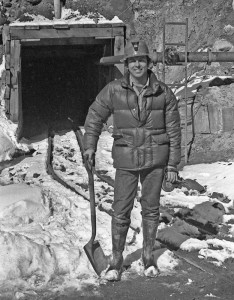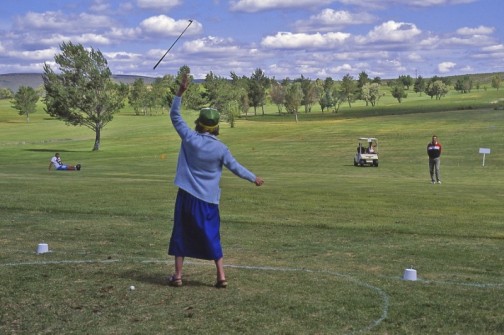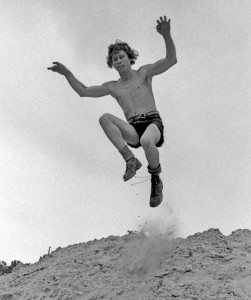Working in television news is a lot like working in a sausage factory. Once you see how it’s made, you’ll soon lose your appetite for it. In particular, I have lost my appetite for local programming, which in recent years has devolved into nothing more than an ongoing gigglefest featuring attractive young people who in their promos profess to “care” so very much about the viewing audience, when in fact they really don’t give a rat’s ass.
Do I sound bitter? Well, I used to be bitter, but I’m over that now. It’s been many years since I was fired from KUTV—not because I wasn’t good at my job, but because I wasn’t “one of the boys.” For instance, I’m not obsessed with professional sports and I seem to have an inordinate interest in what my colleagues would classify as “oddballs.” But to me, they’re not oddballs; they’re heroes. Nothing I admire more than a person who marches to his own drummer, the impossible dreamer, the eccentric who isn’t afraid to live life on his own terms—no matter the cost. Such as, for example: getting yourself fired from KUTV.
Oh, well. For a time it was a pretty cool job. I was in the vanguard of a genre known as the “on the road” report. Best known and probably the best at it was Charles Kuralt of CBS, but I also admired Charles Hillinger of the Los Angeles Times, and often crossed paths with Chuck Woodbury, publisher and sole reporter of a tabloid called “Out West.” What we were all doing was roaming the back roads of America in search of communities not yet corrupted and homogenized by the ubiquitous television set. Wherever the reception was bad, you could count on finding an interesting person and sometimes a whole group of interesting persons engaged in some esoteric and unique tribal ritual.
Later, film in the can, I would return triumphant to Social Hall Avenue, which at the time was home to all three of Salt Lake City’s commercial television stations. Top dog in those days was KSL, which had the advantage of being owned by Bonneville Broadcasting, an arm of the LDS church. KUTV was privately owned and had the reputation of being the “non-LDS” station. Bringing up the rear was KCPX, which was looked upon as a farm team where young reporters learned the ropes at the feet of elderly journalism professors, washed-up dejays and telegenic advertising executives.
Our anchorman was Doug Mitchell, who somewhat resembled Frankenstein’s monster and whose voice was half an octave lower than that of the actor Eric Fleming, who played trail boss Gil Favor on the television series “Rawhide.” It was said that Mitchell could read the phone book and it would sound like the world is coming to an end!
My goal was to feed Mitchell a story that would cause him to crack a smile on camera, or at least change his facial expression. The best I ever got was a slight upturn of old stone face’s thin lips—which was more than anyone else ever got.
By and by it became evident that viewers didn’t wish to hear about the world coming to an end each and every night, so KUTV went in search of younger, more animated talking heads. KSL, meantime, stuck with Dick Nourse, who would occupy the anchor chair for a record-breaking 43 years! During that time, he would share duties with a succession of younger anchorwomen, all of whom played Miss Kitty to Nourse’s Marshall Dillon. Meantime, weatherman Bob Welty played Chester, then Festus.
Now that Nourse has retired, there are no old guys on television. Nowadays if you tune into any local television newscast, what you will see are two young attractive co-anchors of opposite sexes—what I call the “Ken and Barbie Duo.” They will engage in cheerful badinage; then one of them will introduce the night’s top news story, which is almost always a shooting. Taking a cue from the teleprompter, the anchors will assume frowny faces as they send us “live” to an attractive young reporter who is standing outside somewhere on a darkened street where hours earlier something bad happened.
“That’s right, Ken and Barbie,” she will begin her report. Ending with, “reporting for Action News, this is crime specialist Holly Golightly at the scene of where something bad happened hours earlier, on this darkened street right behind where I am standing for some unknown reason.”
Nobody nowadays does news the way I used to. For one thing, I’ve noticed that today’s television reporters get more face time than the subject. Indeed, the actual news event is relegated to the background. As a reporter, I never appeared on camera, mainly because I was the one holding it, and in my opinion he who holds the camera holds the all the power.
Did any of my field reports ever cause Doug Mitchell to smile? Well, one that I remember involved a wiry young oil well roughneck by the name of Bob Dunihoo. One day Bob challenged his coworkers to a footrace up a nearby hill. Why? Because it was there—and so was I, for the dramatic re-enactment set to music (Switched on Bach .) Tools were dropped, overalls and hardhats flung aside as the gang sprang from their stations and scrambled upward. Halfway up, shirts were shed, then pants. By the time Bob reached the summit, triumphant, he wasn’t wearing anything. Why? I have no idea. As I later explained to my boss, “I don’t make the news; I just cover it.” Which was true, once upon a time.


